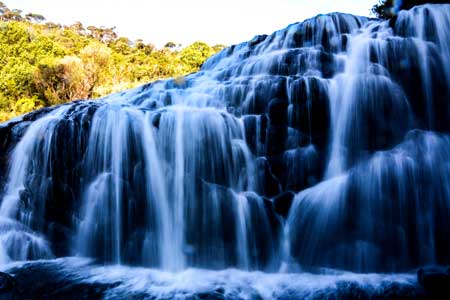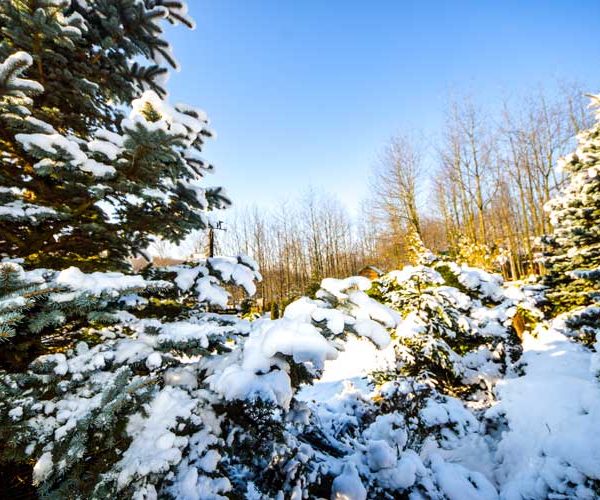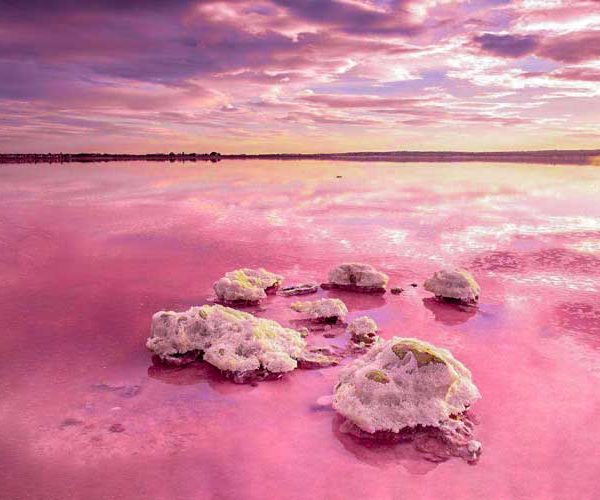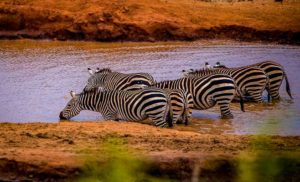Arguably one of Kenya’s largest national parks, the Tsavo West National Park covers an astonishing 9065 square kilometers, located in the Coastal province of Kenya, together with adjoining ranches and protected areas they comprise the Tsavo Conservation Area.
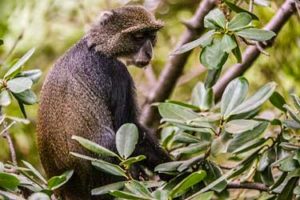
It is separated from its sister national park the Tsavo East National Park by the Nairobi-Mombasa Road and a railway line.
Once home to the ruthless and cunning man eating lions of Tsavo in the 1890s that devoured countless lives of workers working on the Tsavo railway.
The line that now divides Tsavo East and Tsavo West was where the man eaters of Tsavo struck down 140 lives in total.
Later the two maneless lions that hunted and lived together were shot and killed by the person overseeing the railway at the time, as they were a threat to human life, Lt. Colonel Patterson.
The Tsavo West National Park has a beautiful and uneven wilderness ranging from riverine forests, palm thickets, rocky outcrops and ridges, mountains, plains and the tranquil Lake Jipe.
Excursions on Tsavo West National Park are concentrated on a core part of the park, in the north part, known as the Developed Area – a relatively small, 1,000 square kilometer area north of the Tsavo River.
The area boasts magnificent landscapes and a good network of sand and gravel park roads for the full panoply of Kenyan wildlife, which includes; the largest population of red-skinned elephants one of the outstanding features in this game sanctuary and the only red elephants in the world.
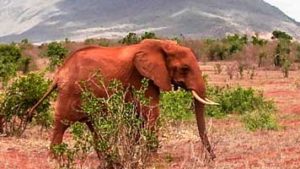
These elephants are actually the same color as every other elephant though they just appear red due to constantly dust-bathing with the Park’s fine red volcanic soil as well as members of the rest of the “Big 5“, also other smaller animals such as the bush baby, hartebeest, lesser kudu, maasai giraffe, Mongoose, Hyrax, Dik- Dik, and Nocturnal Porcupine all call the Tsavo West home.
The developed area of Tsavo West National Park also has several steep and recent volcanic cones one of which is Chaimu Crater, a natural trail where a tourist can leave the safari vehicle and hike to the summit, though it’s best to do this early in the morning as the heat on the cinder track becomes fierce as the sun rises.
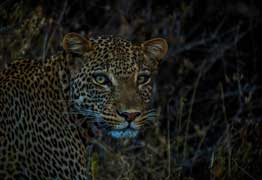
From Lake Jipe to the mountain forests of the Chyulu Hills, the wide range of landscape of the Tsavo West National Park offers protection to many endangered African wildlife including the black rhinoceros, Cosen’s gerbil, Hunter’s hartebeest, several species of shrew and rat, Grevy’s zebra and wild dogs.
Due to the foliage of the Tsavo West National Park being much denser and higher, a traveler will have to work much harder and be more patient than in Amboseli and Maasai Mara in order to be able to spot the animals. In fact Tsavo West tours are more about the unexpected sightings as you turn a bend on the wooded track.
As for the bird lovers, in Tsavo West a traveler will get a glimpse of the wide variety of more than 500 species of birds the park has to offer such as the; white backed night heron, African skimmers, palm-nut vultures and many more. 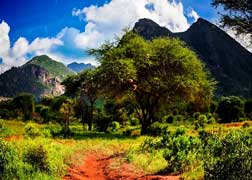
Tsavo West National Park – HOW TO GET THERE:
Tsavo West National Park has a variety of entrances enabling both vehicles and light aircrafts to land in the park depending on the means used by the traveler.
By flight, chartered aircrafts can land at either of the following airstrips within the park which are; Chyulu, Mtito Andei, Tsavo, Jipe, Maktau, Kasigau and Ziwani gates. Travelling by flight is the fastest means on how to get to the park whereby the time of flight is less than one hour.
The best way to see the beauty of the Kenyan landscape is to travel by road, from Amboseli the park is approximately 52km away and the port of entry is the Mtito Andei Gate, from Mombasa the park is 188km away whereby the point(s) of entry is the Tsavo Gate near Manyani or the Mtito Andei Gate.
There are also entry points at Maktau, Ziwani and Jipe, depending upon where the traveler wants to be within the park.
ATTRACTIONS AND THINGS TO DO – Information
Tsavo West National Park has a wide variety of activities designed specifically for a tourist’s every desire ranging from game drives, wildlife safari in the park to boat excursions on Lake Jipe.
Tsavo West National Park – Bird watching 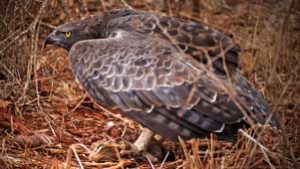
For the traveler setting out on a journey to view birdlife in the wild, Tsavo West is just the park just for that.
One of the upsides of the park is that it is located on the migratory route of many birds, it is an important spot for these species especially the rarely seen Sooty and Eleonora’s Falcons.
Globally threatened species such as the; Taita Thrush, Friedmann’s Lark, Lesser Kestrel, Basra Reed Warbler, African Finfoot, African Darter, Great egret, Saddle-billed Stork, White-headed Vulture, Martial Eagle, and Violet Wood Hoopoe have all been able to be seen in the park.
Bird watching tours are best between October and January when the birds are migrating, featuring many migratory birds including African skimmers, red and yellow bishops, goshawks, buffalo weavers and palm nut vultures.
Also the swamps on Lake Jipe and the acacia woodlands attract many birds, In fact, over 500 bird species have been recorded in the park including; ostriches, kestrels, buzzards, starlings, weavers, kingfishers, hornbills, secretary birds and herons.
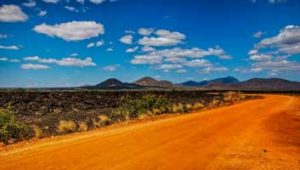
Game Viewing in Tsavo West
The park boasts of more than 2,000 kilometers of well sustained, all weather roads with good signposting which directs a traveler from one fascination to the next one.
Most of the game drives in Tsavo West National Park usually focus on a relatively small but important 1,000 square kilometer area in the park north of the Tsavo River known as the Developed Area where most of the wildlife is concentrated.
The Developed Area offers a natural checklist for the traveler as Game drives in this area are quite productive as Dik-dik, antelopes and the beautifully marked lesser kudu form part of the highlight of the game drive.
Tsavo West National Park – The Chaimu Crater
Chaimu is a word from the Kamba community which translates to “devil”, the crater is a tall rising clad with black coke located on the Tsavo West National Park.
This recent volcano can be climbed by a tourist as there is a track leading to the top, climbing the hill is not as easy as it looks since it can be very hot, the ground is not stable and very slippery.
But the journey is worthwhile because the view at the top is breathtaking.
Tsavo West National Park – The Shetani Lava Flows
Learn and enjoy this geographical evidence located about 4km west of the Chyulu gate of the park, the lava flows got their name from the Swahili word “shetani” which translates to devil.
The lava flows run 8 km long, 1.6 km wide and 5 meters deep.
Climbing the lava flows is not an easy task as the thick black soil is composed of uneven chunks of solid magma that remained after the volcanic eruptions that occurred more than 200 years ago.
This vast expanse of folded black lava spreads for 50 sq. km across the savannah at the foot of the Chyulu Hills.
The Shetani Lava Flows is the largest of a whole series of lava flows in the park, with several places where one can get out of the vehicle and stretch their legs.
The Shetani Cave
Near the Shetani Lava Flows is the Shetani Cave which was also formed as a result of volcanic activity in the park.
The cave is located near the center of the outflow, it has two large openings and one ancient tree that has grown in between them.
Although the cave is only few meters long, the exit is not accessible.
In order to be able to explore the cave travelers are advised to bring flashlights as the cave is dark inside.
The cave used to be notorious for trapping prey animals that had stumbled inside in search of water, and then trapping predators that had followed them in.
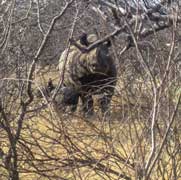
Tsavo West National Park – Make the trip to the rhino sanctuary
One of the most endangered species in the African wild is the black rhinoceros, the numbers of these animals has plummeted drastically in recent years due to poaching leading to measures being taken in order to ensure the survival of these creatures.
One of such initiatives is the Ngulia Rhino Sanctuary, located at the base of the Ngulia Hills is a 90 square kilometer area that is surrounded by a one meter high electric fence for the purpose of keeping out poachers.
Due to the sanctuary these creatures have been able to breed successfully and now it is home to more than 50 rhinos and around 15 of them have been able to be released elsewhere within the Tsavo West National Park.
The traveler is able to see these animals since there are driving tracks within the enclosed area, but the rhinos are mainly nightly animals and the chances of seeing one are slim.
The black rhinos, apart from being understandably shy and more active at night they are browsers and hence prefer to pass their time in thick undergrowth within the sanctuary.
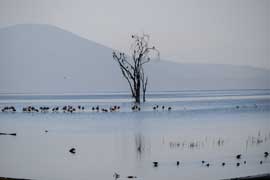
Tsavo West National Park – Boat Excursions on Lake Jipe
One of the most important wetlands in Kenya, the lake lies at the extreme southwestern end of the park and is reached by a dusty track from near Taveta.
The lake is fed from the snows of Mt. Kilimanjaro and the North Pare Mountains in Tanzania, the lake is 10km long and 3km wide.
A traveler can go on boat rides where the crystal clear waters of the lake are swarming with fish, large crocodiles and some big pods of hippos all for the traveler to see.
Huge herds of red skinned elephants come to the lake to drink, and it’s particularly good for wildlife near the end of the dry season.
On the other hand, large flocks of migratory birds stop at the lake from February to May making the surrounding areas rich in birdlife such as the; Pied Kingfishers, palmnut vultures, black herons and African skimmers, Purple Gallinule, Black Herons, the Pygmy Goose and the Lesser Jacana.
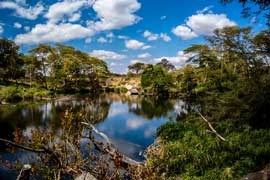
Tsavo West National Park – Visit the Mzima Springs
Undoubtedly one of the major attractions in Tsavo West National Park is the Mzima Springs which is located 48 km from the Mtito Andei Gate.
Mzima Springs is an oasis of green foliage west of the park and produces an a astonishing 250 million liters of crystal-clear water every day from the underground streams starting from the Chyulu Hills 50 kilometers away resulting in several natural pools fringed with palm trees.
The fresh waters at Mzima Springs are a haven to a large variety of wildlife including hippos and crocodiles, but also it is an important source of drinking water for many animals including elephants, lion, gazelles, zebra and giraffe.
There is an underwater viewing chamber at the springs, which gives the traveler a astonishing view of thousands of primal looking fish.
At Mzima Springs travelers are permitted to walk down to the water following a specified path.
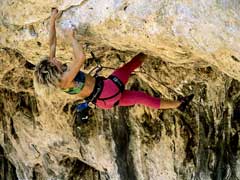
Rock climbing
Rock climbing in Tsavo West is a must do for any strong-willed traveler, the cliff faces in the park offer some of the best rock climbing in the country.
Solid gneiss walls are often covered in holds and free of vegetation, cracks and corners abound tend to be more vegetated.
The views over the savanna plains are spectacular and Mt Kilimanjaro can also be seen occasionally.
The most impressive piece of rock for the rock climbing traveler is the 300m high east face of Kichwa Tembo.
A more recent route to be established is the Ivory Tower on Elephant Rocks, which ranks with the best and hardest bush climb in Kenya.
Generally pegs need not be carried by a traveler, unless climbing in the shade, an early start is advisable as it often gets very hot on clear days.
Rock climbing expeditions in Tsavo West are arranged through the Mountain Club of Kenya.

Tsavo West National Park – ACCOMMODATIONS:
Accommodations are at the traveler’s disposal within the park ranging from lodges, campsites, guesthouses and Banda’s.
The lodges in the park cater to everyone from the medium budget traveler to the luxury seeking traveler which include; the unfenced luxurious Finch Hattons Camp and the Voyager Ziwani Safari Camp, the latter is a popular honeymoon destination due to its spectacular view of Mt.Kilimanjaro and the high level of privacy.
For the budget traveler the; Kitaguni Serena Lodge, Savarin Safari Camp and the Ngulia Lodge are good choices. Banda’s include; Lake Jipe, Kitani and Ngulia.
The traveler can as well decide to live in a self-catering guest house such as Kamboyo and Lake Jipe Banda both of which are found in the camp.
Campsites in the park include: Lake Jipe and Kamboya which are open to the public while The Royal Little, Simba, Kenge and Kudud are special camps.
The Tsavo West National Park Entry Fees.
- All visa, Master, AMX or any debits cards can be used at any gates of the park.
|
Adults KSH |
Child KSH |
Adults KSH |
Child KSH |
Adults USD |
Child USD |
|
515 |
215 |
1,030 |
515 |
52 |
35 |
 TravellerHints!
TravellerHints! 